HTC One max Review - It's Huge
by Brian Klug on October 28, 2013 10:00 AM EST- Posted in
- Smartphones
- HTC
- Mobile
- One
- Snapdragon 600
- Android 4.3
- One max
The performance section is probably a good place to talk about one of the elephants in the room, and that’s the SoC inside the One max. The One max includes a Snapdragon 600 APQ8064T SoC, which consists of 4 Krait 300 cores running at up to 1.7 GHz, and Adreno 320 GPU, all built on TSMC’s 28nm LP process. This is the same SoC that shipped in the original HTC One, and the same 1.7 GHz bin as well. There have been three major variants or families of APQ8064(T) to date. There first was the option for the earliest 1.5 GHz Snapdragon S4 Pro version (AA suffix), the 1.7 GHz “8064T/Pro” variant in the HTC One and One max (AB suffix) which began the Snapdragon 600 branding, and finally the 1.9 GHz CPU and 450 MHz GPU variant we first saw in the SGS4 (AC suffix). Qualcomm usually has a number of revisions of its silicon, and with APQ8064 we saw quite a few. As an aside, expect similar with 8974 or Snapdragon 800.
There’s nothing wrong with the 1.7 GHz Snapdragon 600 variant, it was and still is a great performer, but the reality is that HTC falls behind on its hardware platform with the One max by not going to Snapdragon 800 (MSM8974) like the rest of the competition (Note 3, ASUS Padfone Infinity 2014, LG G2, Nexus 5, and so on). So much of the SoC performance and power story right now is gated by process, and 8974 moves to TSMC’s high-k metal gate 28nm HPM process which affords some clock headroom (up to 2.3 GHz) and lower power consumption at lower performance states for Krait 400 (which is essentially 300 implemented on that new process). 8974 also brings a beefier Adreno 330 GPU with more ALUs and higher clocks, in addition to the new modem IP block, but I won’t go over all of that.
It’s pretty obvious to me that the One max stays with the same SoC used in the original One for a few reasons which ultimately boil down to cost and margin. It obviously means HTC can share the same SoC between the One and One max, and since it’s later in APQ8064’s lifespan I would suspect HTC was able to secure good pricing for it. Having closer shared hardware platform means about the same software stack on top of it, and the same source tree from Qualcomm (BSP) for building and testing ROMs. This makes the software maintenance and update costs lower for the One max. I won’t speculate too much beyond that, but I wouldn’t be surprised if the One max started out an 8974 device but later became an 8064 device, given its timing.
| I Can't Believe I Have to Regularly Update This Table | |||||||||||
| Device | SoC | Cheats In | |||||||||
| 3DM | AnTuTu | AndEBench | Basemark X | Geekbench 3 | GFXB 2.7 | Vellamo | |||||
| ASUS Padfone Infinity | Qualcomm Snapdragon 800 | N | Y | N | N | N | N | Y | |||
| HTC One | Qualcomm Snapdragon 600 | Y | Y | N | N | N | Y | Y | |||
| HTC One mini | Qualcomm Snapdragon 400 | Y | Y | N | N | N | Y | Y | |||
| HTC One max | Qualcomm Snapdragon 600 | Y | Y | N | N | N | Y | Y | |||
| LG G2 | Qualcomm Snapdragon 800 | N | Y | N | N | N | N | Y | |||
| Moto RAZR i | Intel Atom Z2460 | N | N | N | N | N | N | N | |||
| Moto X | Qualcomm Snapdragon S4 Pro | N | N | N | N | N | N | N | |||
| Nexus 4 | Qualcomm APQ8064 | N | N | N | N | N | N | N | |||
| Nexus 7 | Qualcomm Snapdragon 600 | N | N | N | N | N | N | N | |||
| Samsung Galaxy S 4 | Qualcomm Snapdragon 600 | N | Y | Y | N | N | N | Y | |||
| Samsung Galaxy Note 3 | Qualcomm Snapdragon 800 | Y | Y | Y | Y | Y | N | Y | |||
| Samsung Galaxy Tab 3 10.1 | Intel Atom Z2560 | N | Y | Y | N | N | N | N | |||
| Samsung Galaxy Note 10.1 (2014 Edition) | Samsung Exynos 5420 | Y(1.4) | Y(1.4) | Y(1.4) | Y(1.4) | Y(1.4) | N | Y(1.9) | |||
| NVIDIA Shield | Tegra 4 | N | N | N | N | N | N | N | |||
The HTC One max, like a ton of other devices, continues to employ a CPU optimization “boost” feature which plugs in all the CPU cores and increases clocks to their maximum upon detection of certain benchmarks. It’s sad that this needs to be a regular disclosure for each handset release, since the narrative will likely be the same for the near future, but yes the One max does this.
Given product development cycles and how long it takes software in the Android landscape to make it through the chain from internal OEM testing to operator test approval and finally hitting devices, I expect we’ll see a pipeline of devices with this “feature” enabled for a while before it changes, even if we could change every OEM’s mind about it right now. I’m starting to understand more about the origin of these optimizations, the list of APKs they detect and boost for, and what party is ultimately responsible, but that’s a story for another day.
CPU
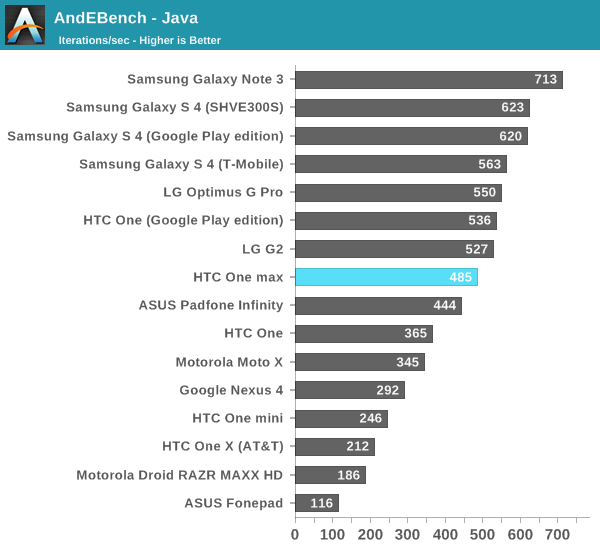
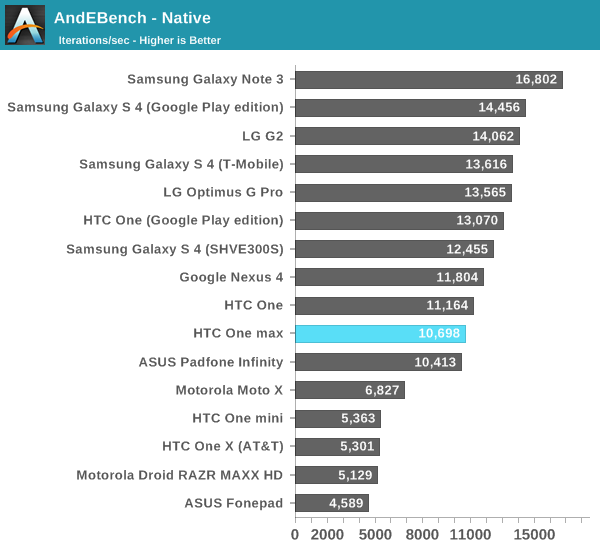
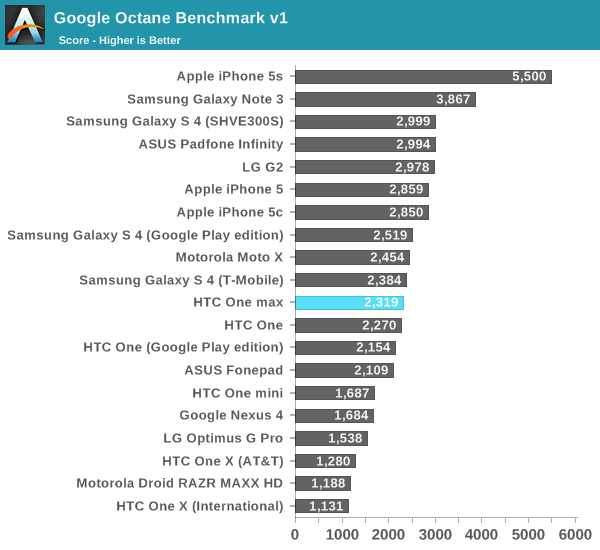
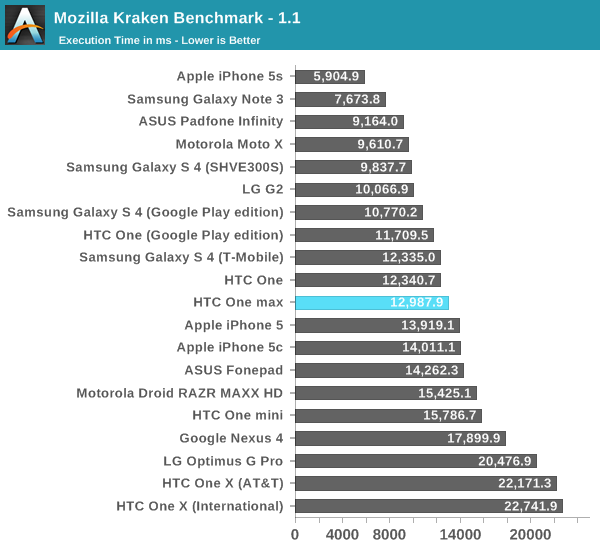
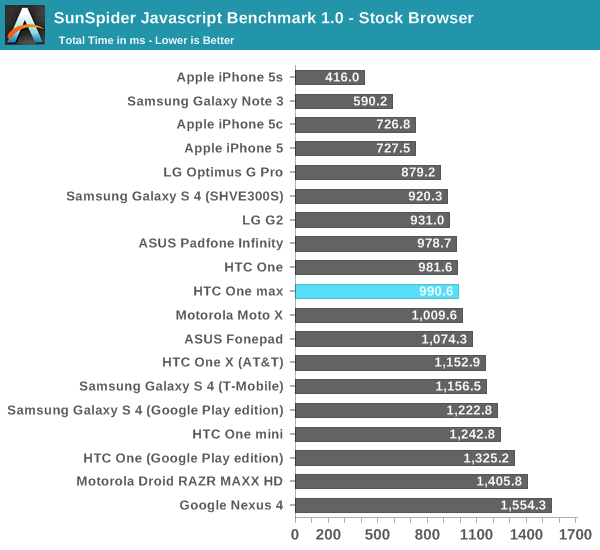
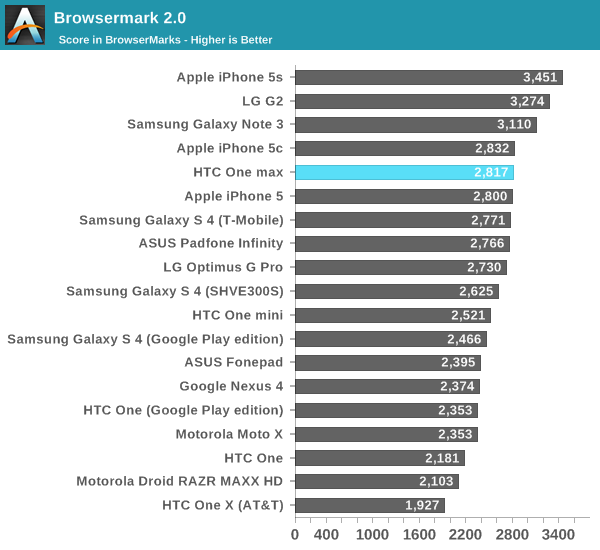
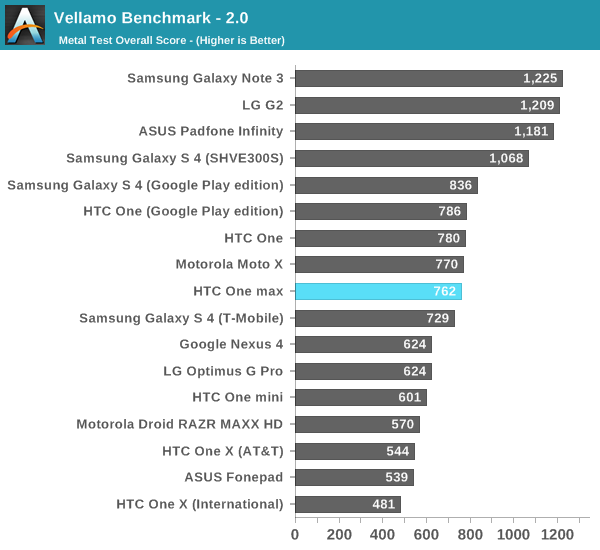
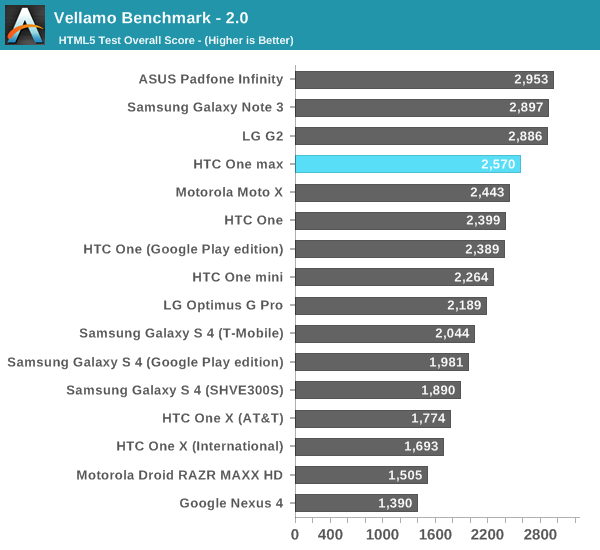
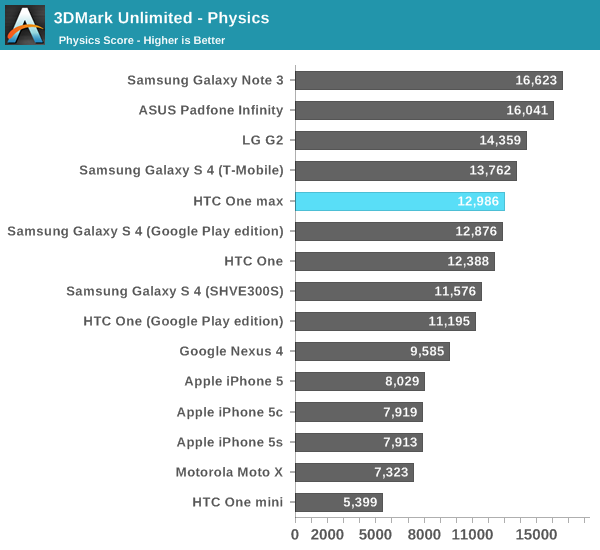
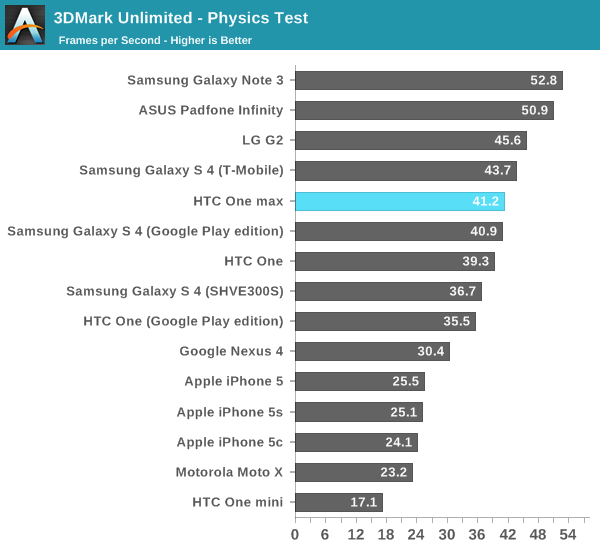
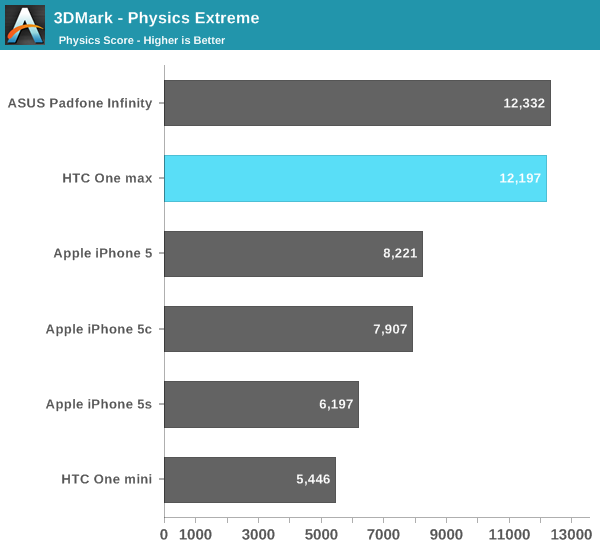
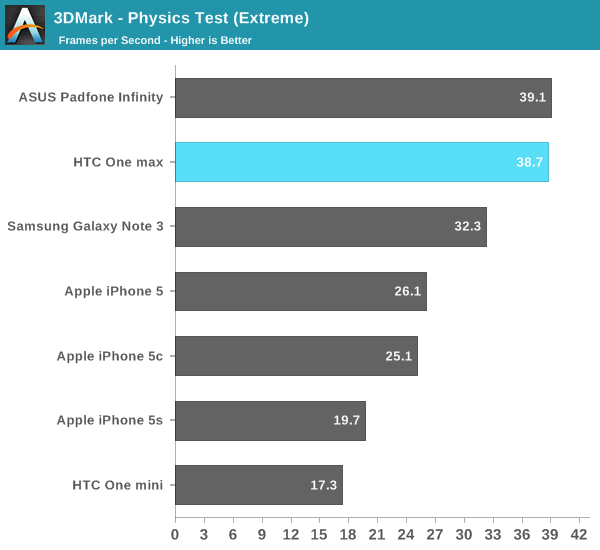
GPU
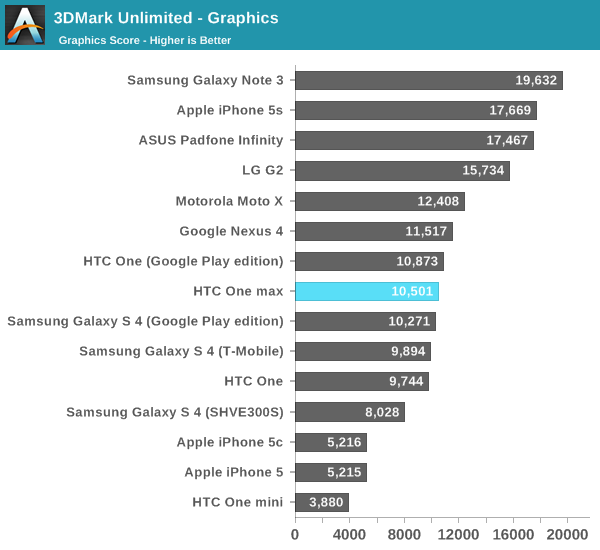
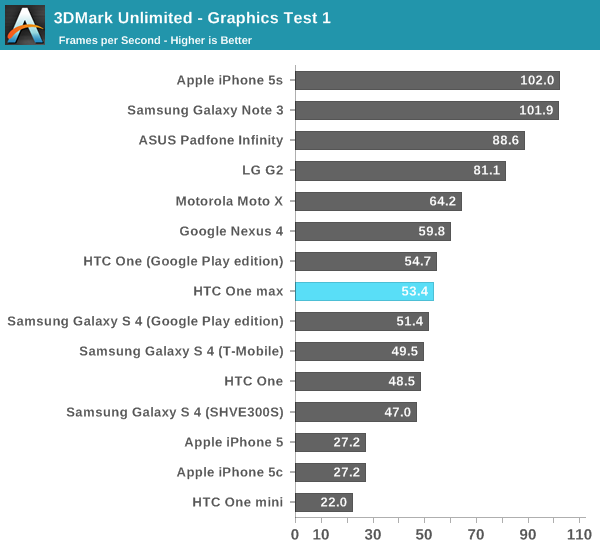
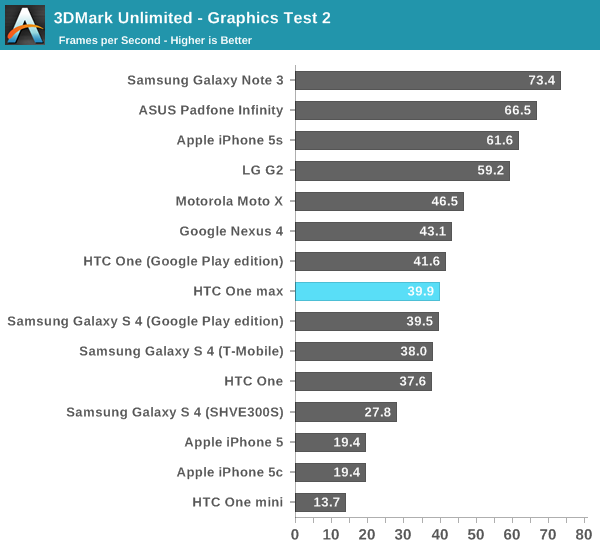
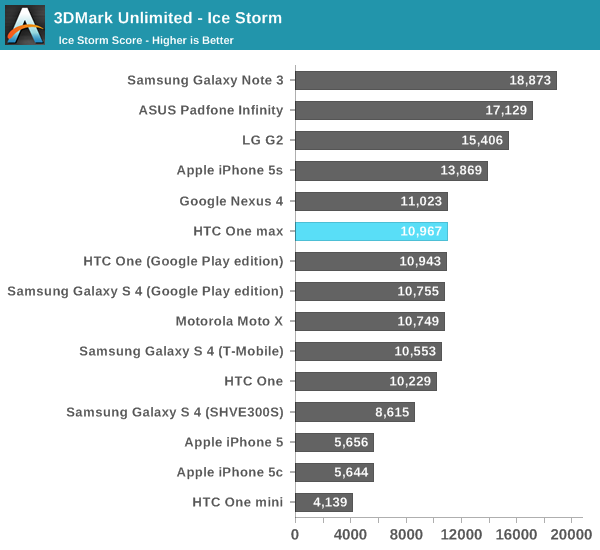
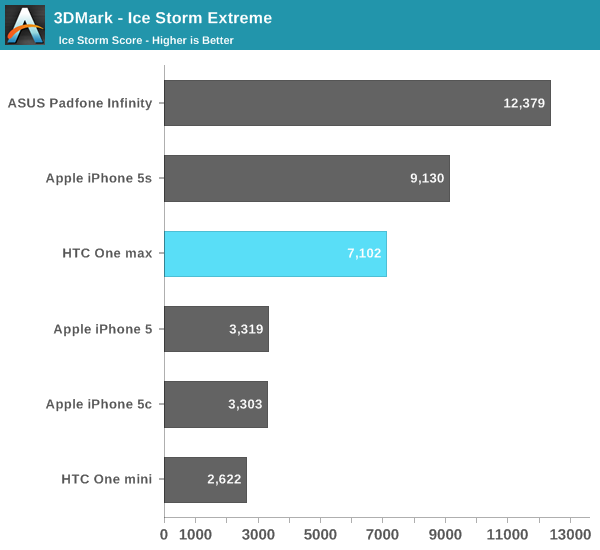
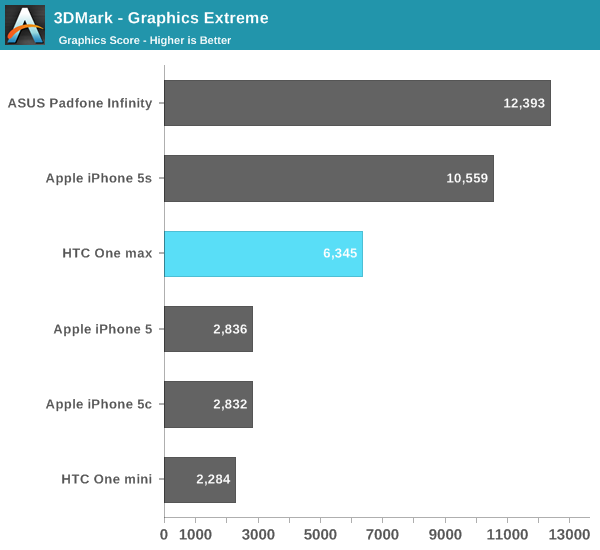
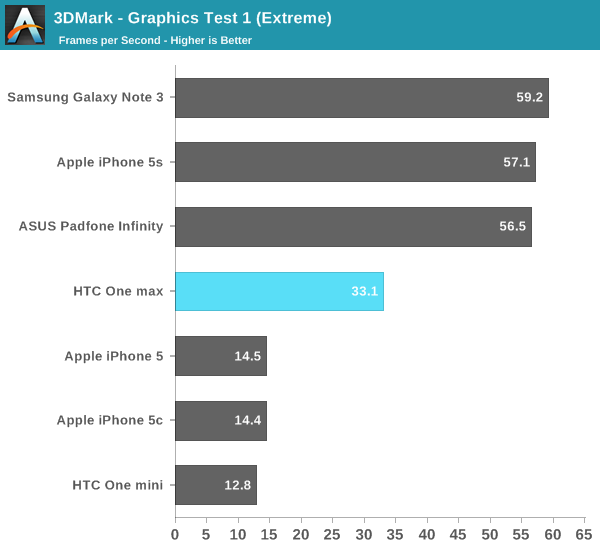
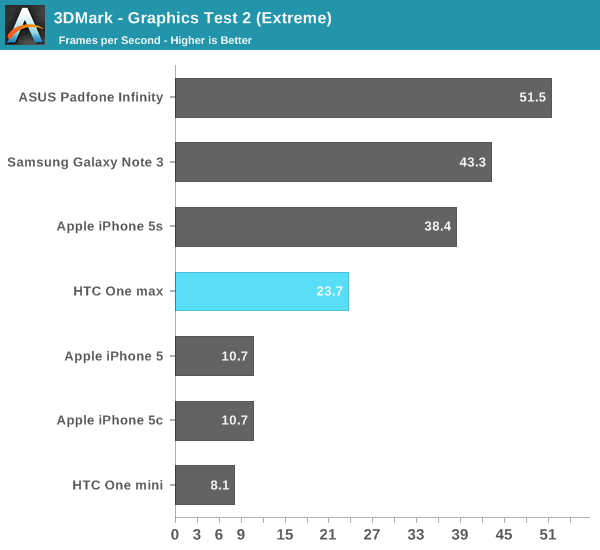
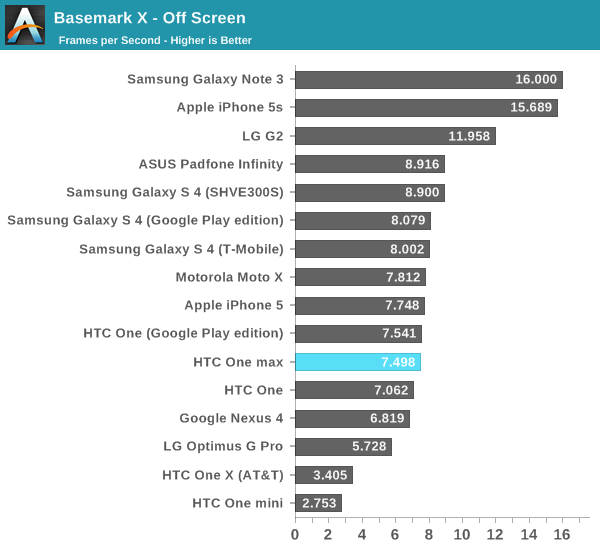
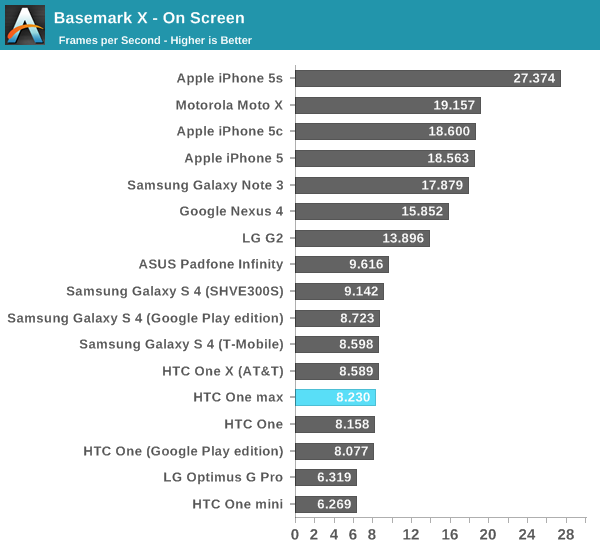
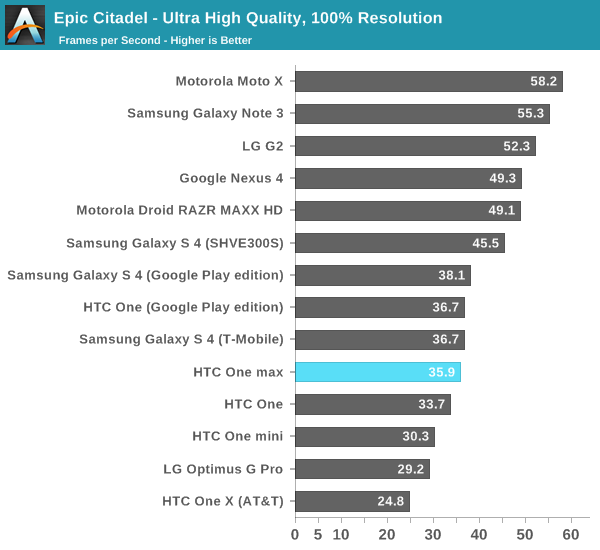
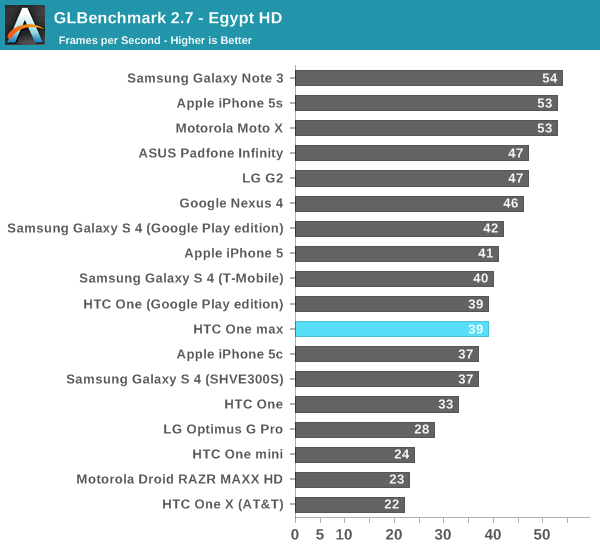
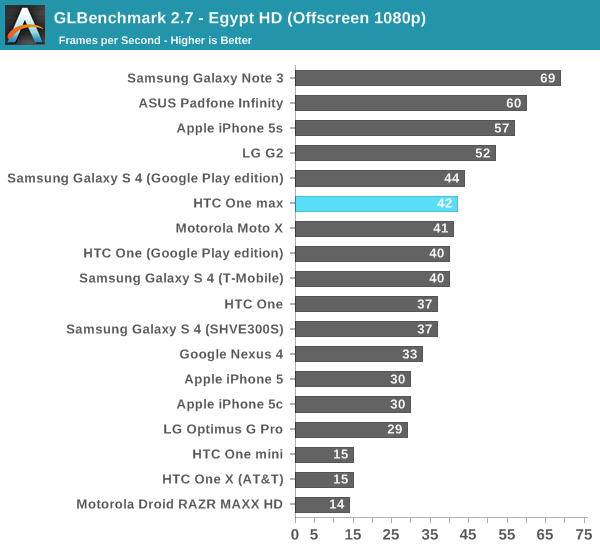
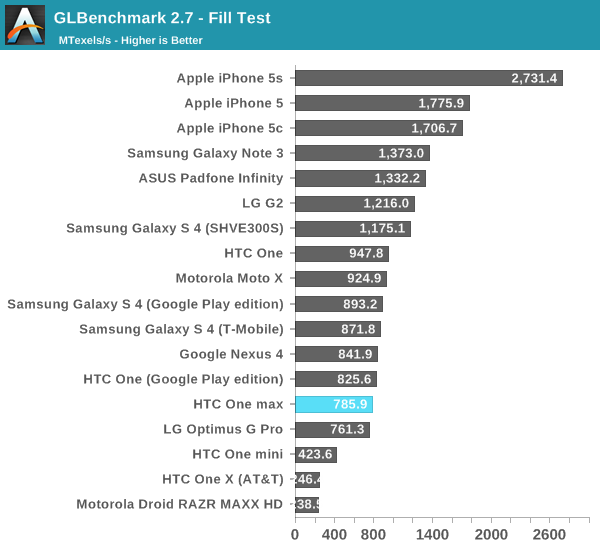

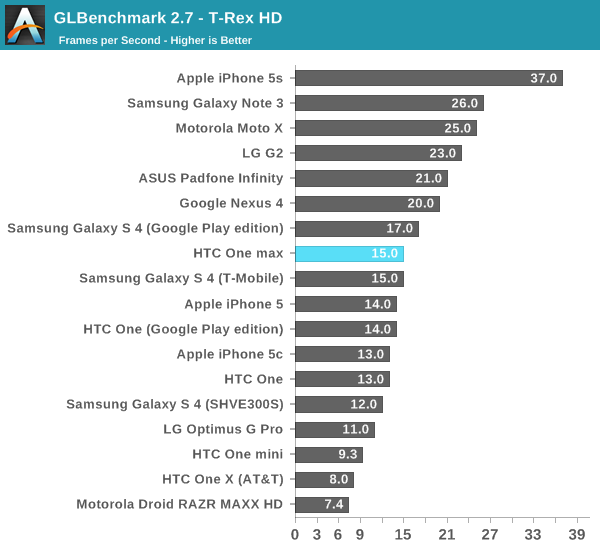
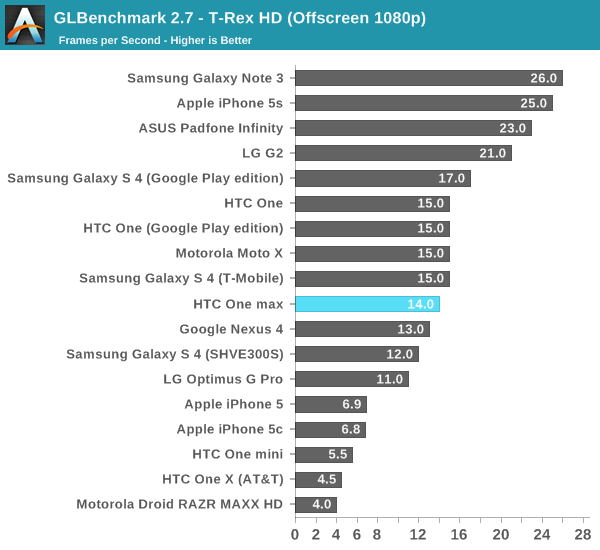
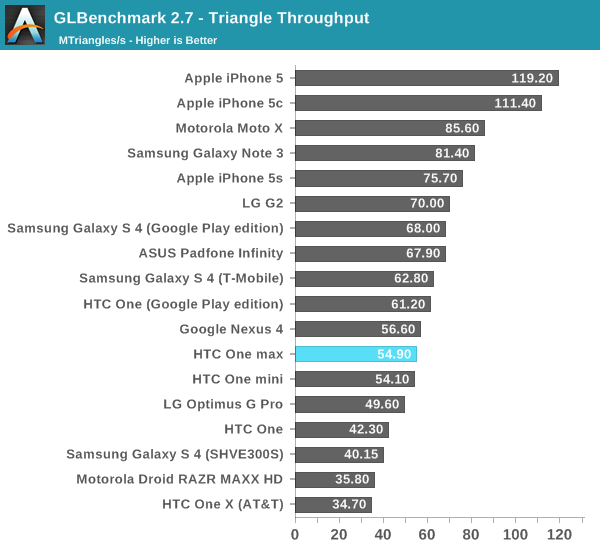
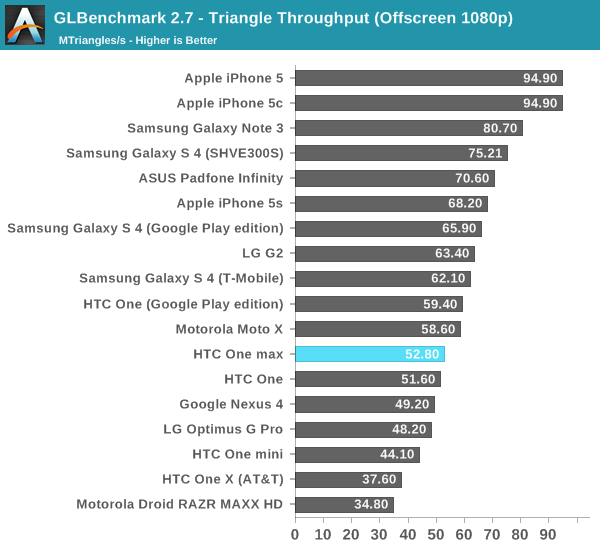
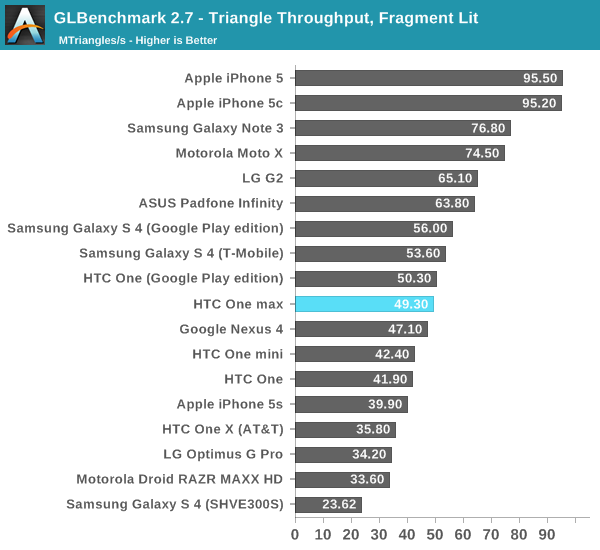
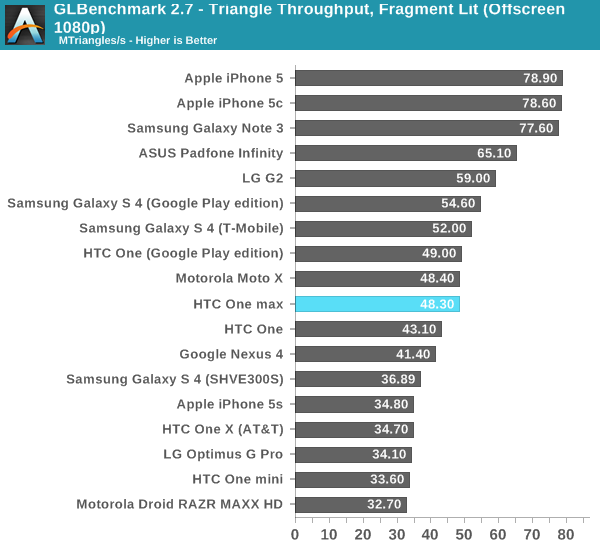
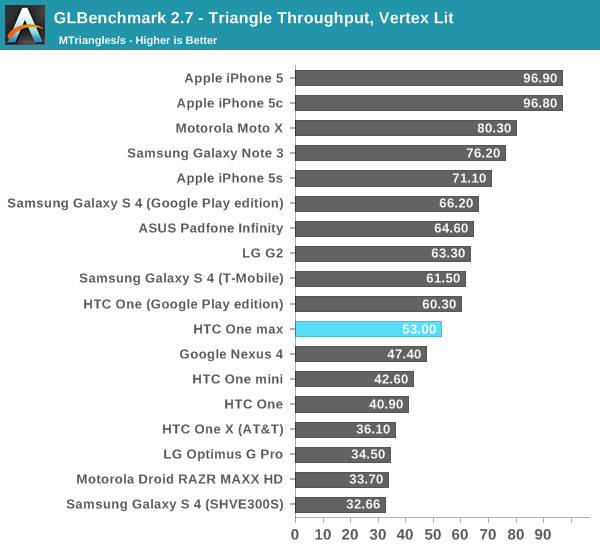
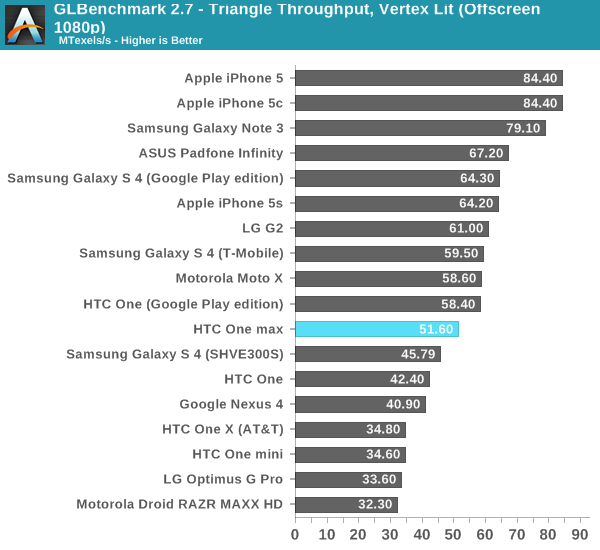
Storage
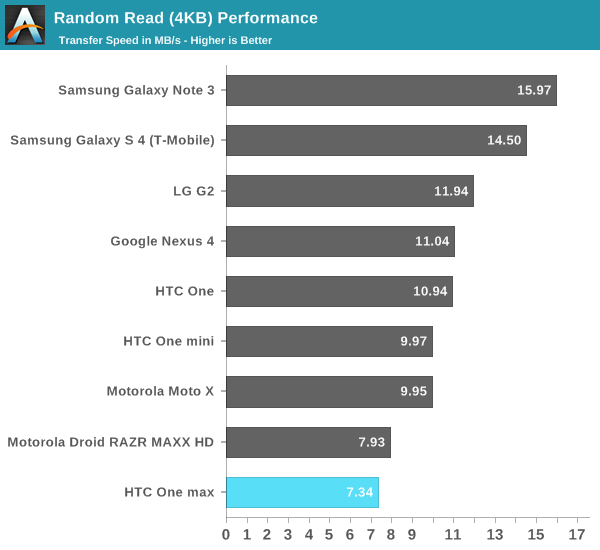
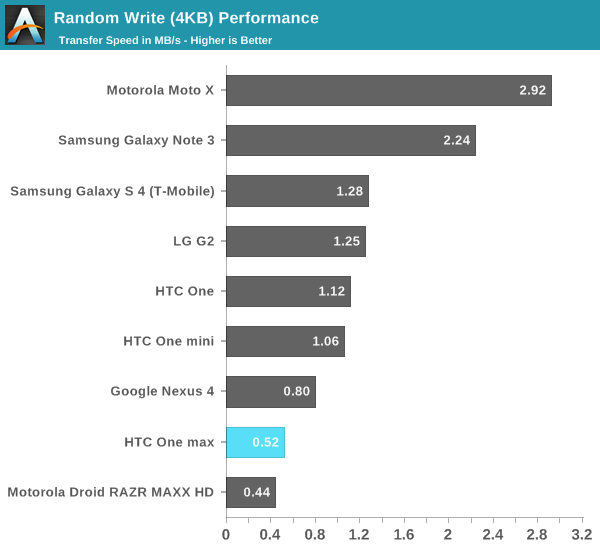
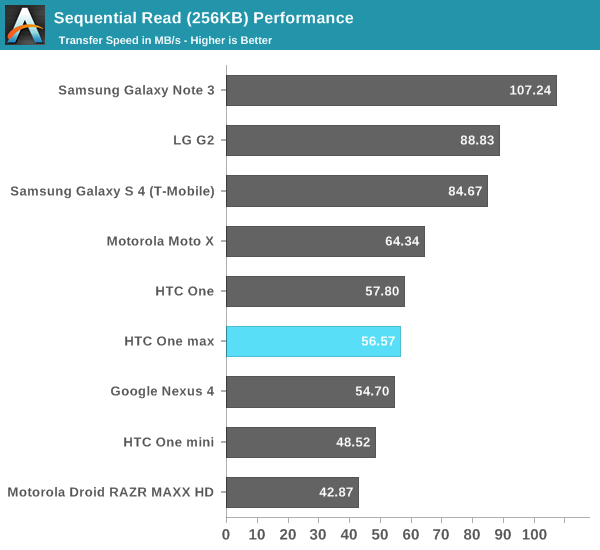
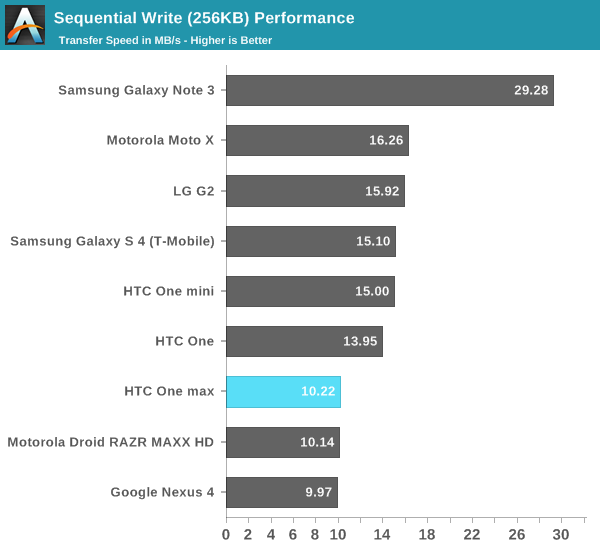
I’m not going to go through all the benchmark results on the One max since again it’s the 1.7 GHz Snapdragon 600 SoC we’re very familiar with at this point. The only oddity is storage performance, where the One max trails in random writes and reads, I'd attribute this to a different eMMC being used. The rest of the results are essentially within the margin of error. I initially suspected that the One max might have a bit more thermal headroom than the One, but this doesn't really seem to play itself out in the results, possibly due to the removable back door.


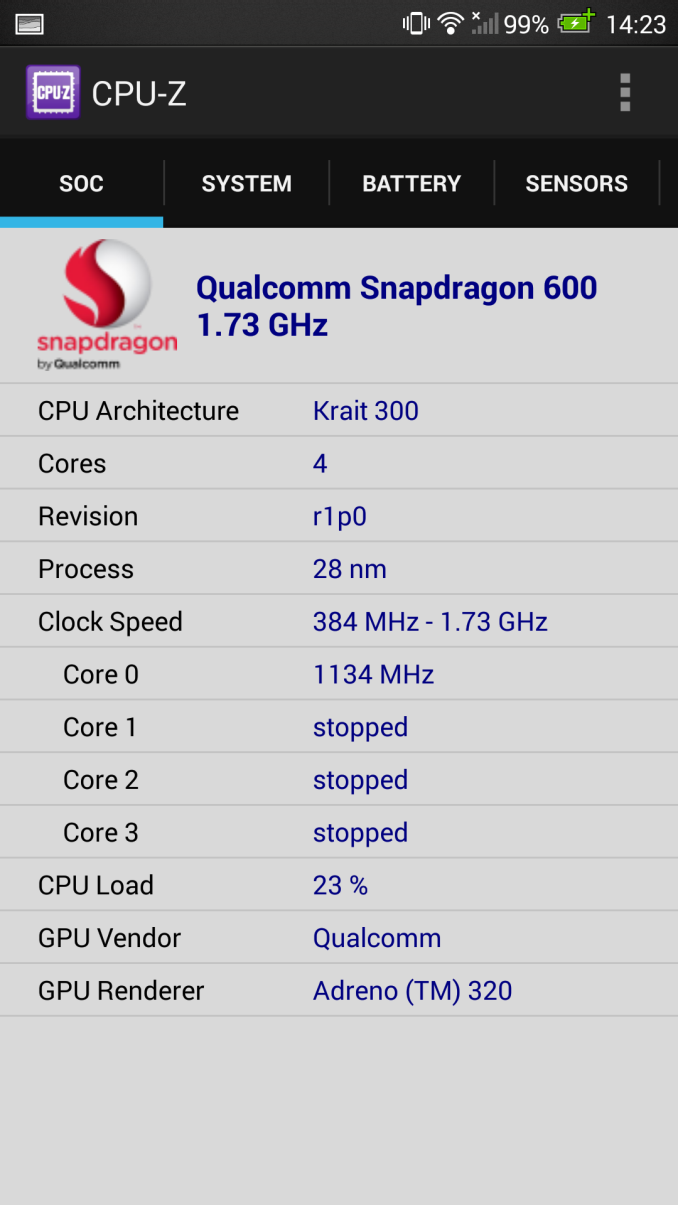
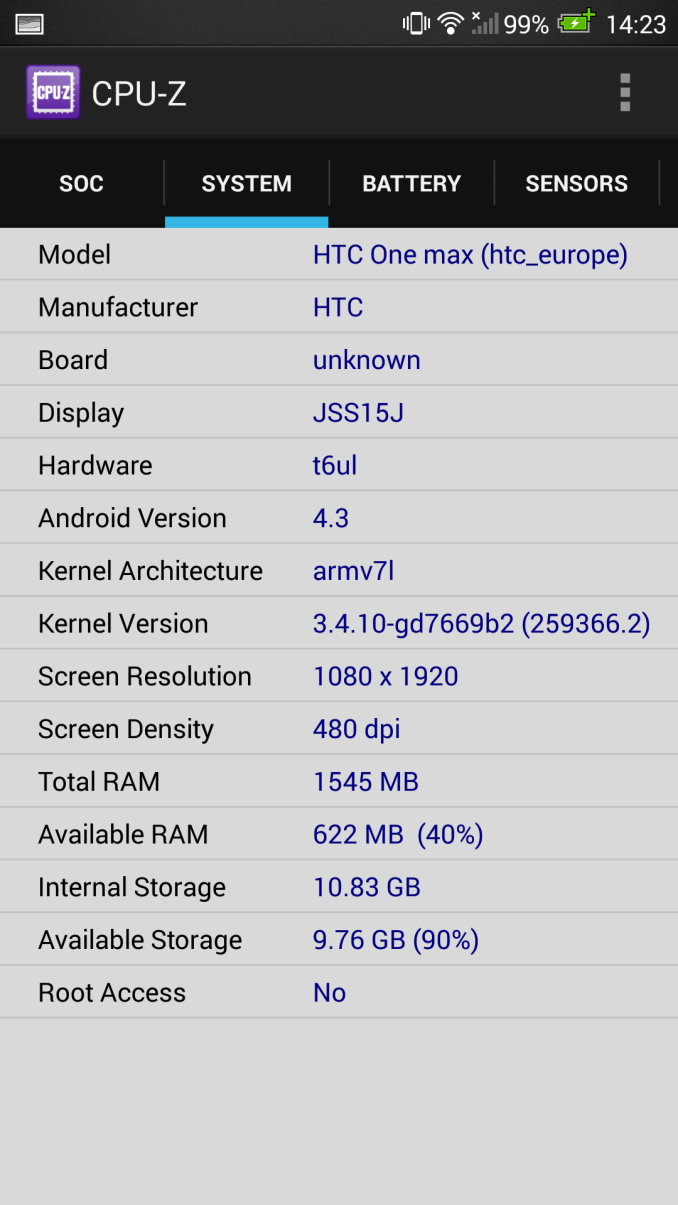








197 Comments
View All Comments
smartypnt4 - Monday, October 28, 2013 - link
One thing people always brag about on Android is consumer choice. If Samsung more fits your needs, more power to you. But I fail to see how removing one of the top tier Android phone manufacturers is a good thing. I don't want any one company to be massively ahead of the rest in market share, because I believe some competition is a good thing and prevents companies from resting on their previous success and putting out crap new products.Say what you will about mircoSD slots. Personally, I don't store much on my phone anyway, so it's not a big deal to me. But please don't espouse the absurd opinion that removing players from the Android space will in any way improve it.
smartypnt4 - Monday, October 28, 2013 - link
Shit. On my phone. Did not mean to reply to you, but rather the guy you commented on. My bad.JeffFlanagan - Monday, October 28, 2013 - link
>Shit. On my phone.OK, but you're going to need a new phone.
nerd1 - Monday, October 28, 2013 - link
HTC one is a nice device but it has too many deal breakers for me and more (no micro sd, sealed battery, almost non-repairable, terrible QC, low-resolution camera)They basically shot their own feet, trying the apple way, while being no apple.
smartypnt4 - Monday, October 28, 2013 - link
Clearly you missed my point. I'm not interested in arguing the merits of a removable battery or microSD card slot. All I'm saying is that dude needs to chill out. If the Android space is truly about choice, what do you care what HTC does as long as SOMEONE makes the phone you want. In this case, HTC's phones this year clearly don't meet your needs/requirements, and that's fine. Saying they shot themselves in the foot is a bit harsh, though. I know several people who bought HTC Ones over SGS4's simply because of how the thing felt when they held the device. Say what you will about specs, features, etc., but not everyone values the same things you do. Hard to accept, I know. But my good lord. Are you really so shortsighted as to believe that the general population gives a rat's ass about removable batteries, SD card slots, phone repairability (wtf?), anecdotal evidence of bad QC, and a camera that makes heavy tradeoffs (in this case, IQ for low-light performance)?Not everyone has exactly the same desires or needs as you. Which is the beauty of the Android space: people have the luxury of choice, which you only get with multiple manufacturers competing in the same space.
/endrant
nerd1 - Monday, October 28, 2013 - link
So the device w/o micro sd slot is effectively $100-200 more expensive than device with one.iPhone 5s 64GB: $399 w/contract, total storage 64GB
S4 16GB + 64GB sdxc : around $200 w/contract, total storage 80GB
I know companies prefer to removing the slot to sell the high capacity devices with greater margin (BOM difference of 16GB and 64GB devices is almost negligible) but why we consumers blindly follow what they are doing?
MKy - Monday, October 28, 2013 - link
I can understand Apple there. Adding an SD card slot would be adding a means for the user to completely ruin the experience. Internal flash of my Ipad 4 reads/writes about 160MB/s, don't know about the newer models. A cheap SD card reads about 4 MB/s, writes even worse. So imagine running apps off it or using it as data storage. Would be painful.Spunjji - Monday, October 28, 2013 - link
Simple solution: Refuse to support cheap-ass storage. Validate some cards and support those, refuse app installation to SD. My 64GB Micro SDXC benches faster than most phone NAND... it cost me £40.kyuu - Monday, October 28, 2013 - link
I haven't been able to find any actual data on the storage performance of the iPad 4 (or any iPad for that matter), but I find your 160MB/s number rather unlikely. The storage used in iPads is the same used in iPhones, to the best of my knowledge, which isn't very fast.MKy - Monday, October 28, 2013 - link
Actually it is that fast. You can find benchmarking tools in the app store and even measure it by hand - open a say 5 gig video in one app and then choose open in another, then count the seconds it takes to copy it over (the delay after issuing the command) and calculate. The flash in iphone 5 is about the same speed.